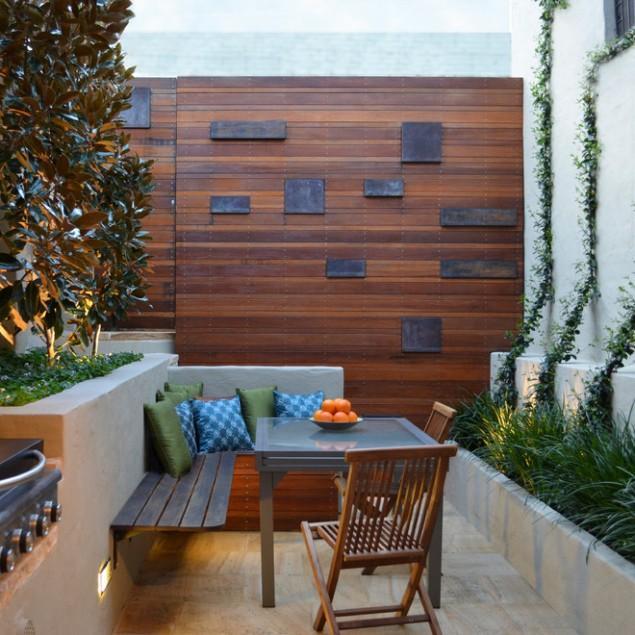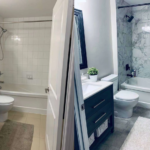Your home is both a living and a saving investment. It will not pay off if it is ignored. It will provide a high yield in terms of comfort and utility for your family, as well as the avoidance of costly maintenance expenditures if properly maintained and enhanced. Home modifications also tend to raise the neighborhood standards and, as a result, property values. We have discovered 4 excellent architectural solutions that will make any home much more comfortable to live in. These ideas are frequently simple to execute, and they may quickly transform a house from cookie cutter to unique.
Spray Foam Roof
Few commercial roofing materials outperform spray polyurethane foam in terms of durability and performance. What exactly is spray foam? Spray polyurethane foam is a multi-component material made by combining isocyanate (A) and polyol (B) with pressure and heat to generate a plural-component substance. Chemicals A and B are sprayed as liquids, and when they come into contact with each other, they react to produce a solid, lightweight, and totally adherent roofing membrane.
To clarify, this roofing system protects your roof from harsh temperatures, wetness, and other factors. If you live in San Francisco, you probably know how the weather can be quite harsh on your roof, especially because of heavy fog that can leave a film of dampness on level or gently inclined roofs. To that end, many Bay Area roofing companies will be upfront about the degree of your roof damage, provide a fair and open quotation, and back up their work with a warranty. The foam and coating application is rapid and may be applied to any roof form or type, even irregularly shaped roofs, with little to no interruption. The SPF roof may be put directly over asphalt, metal, concrete, shingles, and wood after cleaning the old roof.
Underfloor Heating
Underfloor heating is a more environmentally friendly and efficient way to heat your house. UFH uses radiant heat technology to gently warm people and items in the room from the ground up, allowing for a considerably more energy-efficient mode of heating. Underfloor heating may be installed in virtually any home, whether it’s being built or retrofitted into an existing one, and under practically any sort of flooring. So that you obtain the proper heat output for your house, underfloor heating may be adjusted to your needs, the space it will be installed in, and the flooring type. Don’t be put off by the fact that underfloor heating costs more initially than radiators. UFH has much lower operating expenses than radiators. It’s also worth mentioning that underfloor heating systems may last for more than 50 years, whereas the average radiator lasts just 8–12 years until becoming inefficient.
Considering Circulation
The way people move through and around a place through time is referred to as circulation in architecture. It may be divided into four categories: direction, type of usage, frequency of use, and time of use. It is frequently a cramped environment, so you should eliminate such a place if at all possible. Rooms can be rearranged to make the living area more functional for the people who live there. Narrow spaces, odd room designs, and knocking out or constructing gaps in internal walls, for example, can all be changed architecturally to offer a whole new living experience.
Draw the circulation lines of how members of your family utilize a room on a room layout. For more frequent motions, use thicker lines. You can tackle typical difficulties like traffic caused by misplaced doors or people using the kitchen table and getting in the way of others using the kitchen workstations after analyzing how your family utilizes a space.
Tubular Skylight
Traditional skylights can be a good way to bring natural light into a space, but they can also cause a slew of insulation and leakage problems. That’s where the tubular skylight comes in. Sun tunnels are a term used to describe tubular skylights. That’s an excellent way to understand how they work. The conventional solar tube is a polished sheet metal tube that is fitted to the roof to direct sunlight into the interior of the house. The most common sizes are ten and fourteen inches in diameter. A weather-resistant acrylic cover is attached to the tube’s roof end. A spherical window-like aperture with a diffuser on the ceiling side helps spread the light evenly. Installed in bathrooms, laundry rooms, hallways, and walk-in closets, tubular daylighting devices assist in brightening interiors while also saving money on electricity.
Remodeling your property will not only increase its worth but will also make you feel better about it. With these four solutions, you can reclaim that new-home sensation. So, what do you have to lose? It’s past time to quit making excuses.









